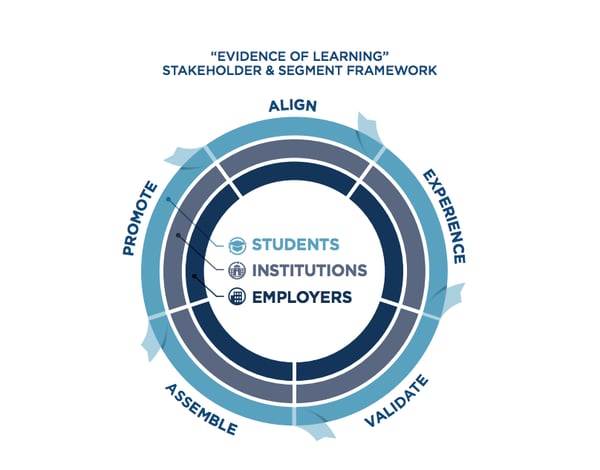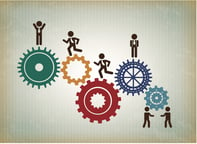Published on
Evidence of Learning Framework: Beneficial for Students, Institutions, and Employers

The traditional approaches to measuring and sharing an individual’s learning no longer match the expectations of students, employers and higher education administrators. Transcripts—the official record for what a student has learned—simply do not capture or communicate an individual’s capabilities and understate skills such as critical thinking, teamwork and problem solving. But while employers are placing more and more value on these foundational, lifelong skills, few institutional measures effectively capture them.
Tyton Partners recently published a two-part report establishing a common and accepted definition of the “evidence of learning” concept, providing a foundation for catalyzing discussion, engagement and action among stakeholder groups. We define “evidence of learning” as the body of knowledge, skills and experience achieved through both formal and informal activities that an individual accumulates and validates during their lifetime.
The Importance of an Integrated Evidence of Learning (EofL) Framework
A growing and impressive list of companies, organizations and initiatives provide a wide range of solutions designed to more effectively capture, present, and evaluate learning. But many of these initiatives are not integrated with current institutional and employer processes and services, limiting their potential. This lack of alignment contributes to both the public angst regarding the efficacy and value of postsecondary education and expanding investments in consumer—and employer—focused education delivery models and systems for capturing and measuring learner competencies.
For colleges and universities, evidence of learning is not a new concept. However, adopting and implementing strategies and practices to affect integration across services, technologies, workflow processes, and learning outcomes is necessary to strengthen higher education’s support of and value to students and the workforce community.
The EofL framework highlights the key objectives and needs of its primary stakeholders: students, institutions, and employers. The framework is composed of five segments—Experience, Validate, Assemble, Promote and Align—that form an iterative set of activities for each stakeholder.

The EofL framework seeks to establish a more integrated, student-centric environment in which institutional resources are more tightly aligned with each student’s goals and where academic programs are infused with rigorous and relevant workforce considerations and competency development. It also provides institutions with a framework to support the growing population of non-traditional students and to create more efficient and cost-effective pathways for students. The outcome is a more transparent, aligned set of expectations and behaviors enabling students’ pursuit of college and career goals.
Getting Buy-In From Higher Education Administrators
Acting as the bridge between students and employers, colleges and universities should feel the greatest urgency to effect a more tightly integrated EofL system. We are already starting to see how the EofL framework is sparking discussion on campuses, in communities and even between institutions and employers. But there needs to be more – more conversations and collaboration among the various, and often siloed, institutional stakeholders, including registrar, IT, career services, student affairs and academic technology and learning, among others.
These conversations and local efforts should hopefully serve as a prompt and prerequisite for broader conversations across multiple institutions and stakeholder groups.
The Benefits of the Integrated EofL Framework
Students
It would acknowledge and apply greater value and “credit” to a non-traditional student’s workforce and non-academic experiences and capabilities. Stepping in and out of academic experiences would be more seamless and efficient for working professionals, as their employers may be more closely aligned with local institutions.
Employers
A more unified approach to EofL would give employers greater transparency into what learners know and what they can do, shifting from grades and degrees as signals, to capabilities and competencies as beacons. It would enable better coordination with postsecondary education to enhance and align pathways, expectations and goals.
Higher Education Institutions
The challenge for college and university leaders right now is that there are many solutions serving the five segments of the Evidence of Learning framework, without any established paths between them. Equally of note, though, is the unique position postsecondary institutions hold to encourage greater coordination across the marketplace.
The chief benefit to institutions’ engagement around this issue will be strengthening a learning-centric culture that encompasses the totality of students’ learning experiences and capabilities, while establishing a more transparent and aligned system facilitating fulfillment of academic and career goals.
Tyton Partners has published two full reports on this topic – “Evidence of Learning: The Case for an Integrated Competency Management System” and “Evidence of Learning: Understanding the Supplier Ecosystem”. Both reports were supported by funding from the Bill & Melinda Gates Foundation and available for free online.
Author Perspective: Analyst



